![[Maple Math]](images/Convolution1.gif) ,
,
Mathematics 174 -- Applied Mathematics 2
Another Convolution Example
Consider the family of Gaussian functions
![[Maple Math]](images/Convolution1.gif) ,
,
where
![]()
> g := (alpha,x) -> exp(-(x/alpha)^2)/(alpha*sqrt(Pi));
![[Maple Math]](images/Convolution3.gif)
> plot({g(2,x),g(1,x),g(1/2,x),g(1/4,x)},x=-4..4,color=red);
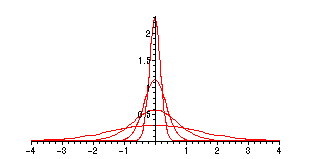
As
![]() -> 0+,
-> 0+,
![]() acquires a taller and taller peak at
x = 0,
while
acquires a taller and taller peak at
x = 0,
while
![]() for all
x
not
for all
x
not
equal to zero. If we convolve with another function like
> f := x -> piecewise(abs(x) < 1, 1, 0);
![]()
> plot(f(x),x=-4..4,discont=true,color=black,thickness=3);
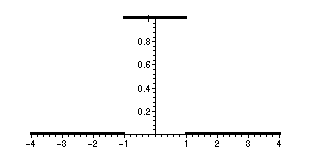
> convo := (alpha,x) -> int(f(t)*g(alpha,x-t),t=-1..1);
![[Maple Math]](images/Convolution10.gif)
N.B. Limits of integration are
t = -
1..1
rather than
t =
![]() , since
f(t)
is
, since
f(t)
is
zero outside the interval t = - 1..1 .
> plot(convo(1,x),x=-4..4);
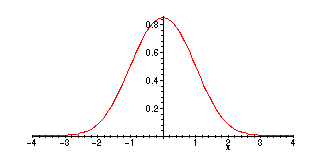
> plot(convo(.25,x),x=-4..4);
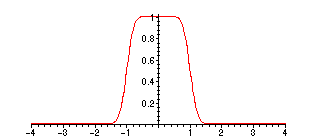
> plot(convo(.05,x),x=-4..4);
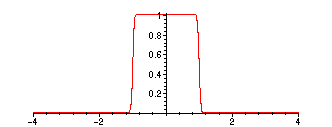
>
Note that as
![]() +, the graph of the convolution
f *
+, the graph of the convolution
f *
![]() tends to approximate
f more and
tends to approximate
f more and
more closely!
(This is not really a surprise: What is
![]() as
as
![]() ?) However,
?) However,
for all
![]() , the convolution
f *
, the convolution
f *
![]() is infinitely differentiable (hence continuous).
is infinitely differentiable (hence continuous).